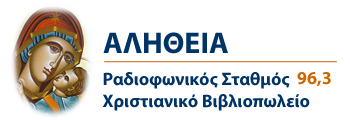Αναζήτηση αυτού του ιστολογίου
Τετάρτη 17 Δεκεμβρίου 2014
The Genealogy of Christ: Where We Come from, Who We are, and Where We’re Going
The Genealogy of Christ: Where We Come from, Who We
are, and Where We’re Going
Source: St. Lawrence Orthodox Church
Among the ancestors of Christ are the righteous and
heroic, the obedient and preserving, yet there are clear eras and events of sin
in His family tree.
Priest Thaddaeus Hardenbrook | 17 December 2014
The Genealogy of Christ: Where We Come from, Who We
are, and Where We’re Going
Two Comforting Lessons before the Nativity of Christ
Four Women on the Threshold of the Gospel
The Sunday before Nativity is dedicated to the
genealogy of Christ for two very important reasons. First of all, to declare
His fulfillment of the prophecy that He would be both of the seed of Abraham
and of the seed of David. For 1500 years, the People of God had been
promised
that from among the descendants of Abraham and David a Savior and King would be
born. And at the birth of the Christ-child, this ancient promise if fulfilled.
The second, equally important, reason the genealogy is
presented to us on this day is to confirm and remind us that the prophesied
Savior comes to save all people, of every race, saint and sinners. He is a
compassionate King who acknowledges imperfect yet well-inteded efforts,
overlooks error accompanied by sincere repentance, and accepts being brought
forth into human existence by way of lineage that is holy and yet at times sinful.
Among the ancestors of Christ are the righteous and
heroic, the obedient and preserving, yet there are clear eras and events of sin
in His family tree. The names of Judah & Tamar, Rahab, David &
Bathsheba bring to mind struggles with deception, seduction, adultery, and
murder. We are reminded that “David the King begat Solomon by her who was the
wife of Uriah.” And yet we do not consider these events as skeletons in the
closet that hopefully no one will notice. These people and events are
irrefutable proof that from a state of sin, by the love and power of this
Savior, we can proceed towards holiness and ultimately be united with that
which is truly Divine.
In the very early Church, it was most important that
the divinity of Christ was emphasized. For, if He is not truly God, the
salvation and commandments He delivered may be helpful teachings but are not
divine revelation. And yet in the years that followed, the humanity of Christ
began to be overlooked, and heretical ideas arose that reduced Christ to an
impersonal Savior more divine than human, more omnipotent than compassionate.
As a result, the Church separated the feast of Nativity from Theophany in order
to emphasize dogmatically the fully human nature of Christ that was
incomprehensibly and unconfusedly united to the fullness of His divinity.
Ours is the Christ “who, for us and our salvation,
became man” (Creed). He who teaches, listens, heals the sick, touches the
unclean, and associates with sinners. He who became man, born as a child both
of Abraham and of David, that we too might “become as little children . . . and
enter the kingdom of heaven” (Matt. 18:3).
Believe and trust, be awestruck and filled with
rejoicing that Christ comes not for an impersonal human collective, but for
each of us particularly. He is personal and relational, being known and
enabling us to be known. He begins this personal salvation with Mary, His
mother, not stopping until He has touched everyone. The fruit of that touch is
determined by each of us.
Anticipating the awe and joy!
Source:
http://www.pravmir.com/genealogy-christ-come-re-going/#ixzz3MAfCaIB5
Εγγραφή σε:
Σχόλια ανάρτησης (Atom)













Δεν υπάρχουν σχόλια:
Δημοσίευση σχολίου